RECIPE:
A quick guide to musicians achieving harmonious relationships with concert & festival presenters, and ultimately with audiences, from one jazz presenter’s perspective.

Ingredients:
2 cups artistic excellence
1 cup savvy communication & self-marketing skills
1 cup research
1 cup stagecraft
3/4 cup recent recording
Yield:
Improved gig opportunities and growing audiences.
Serves:
You, your band, and ultimately your audience.
As a jazz festival & concerts presenter since the late 1970s, I suppose for some artists I’m one of the holders of the keys to the Holy Grail – the gig. The majority of my festival work has been as artistic director of the Tri-C JazzFest (TCJF) in Cleveland, OH; an affiliation I’ve held since the inception of the festival as a member of its original organizing committee, and more recently as artistic director of the festival for the past 18 years.
Other concert and festival curating I’ve had the pleasure and privilege of working has included affiliations with Tribeca Performing Arts Center (NYC), 651Arts (Brooklyn), HarlemStage (NYC in its former incarnation as Aaron Davis Hall), the Smithsonian Institution (DC), the BeanTown Jazz Festival (Boston), and the Mid-Atlantic Jazz Festival (MD). The great majority of my current artist communications and interactions concern TCJF.
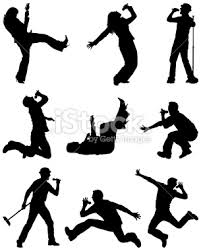
TCJF is a 34-year old festival with a strong education focus that in addition to booking concert artists for performances also engages artist-educators for residency work. (Stay tuned to this site and the Clients section for big news on a rather seismic TCJF shift!) So we’re in the business of providing some significant performance and exposure opportunities to artists; believe me, I get that.
However, Northeast Ohio is not one of the “major media markets”, nor is our target community blessed with a wealth of jazz radio. The most frequent jazz broadcaster in the area for years was WCPN, Cleveland Public Radio. But they opted out of music broadcasting several years ago in favor of yet more news & information (when are we going to reach the news & information overload?). So at this point jazz radio in the Greater Cleveland market and across Northeast Ohio is purely anecdotal; on par with most markets these days I’m afraid. The absolute best weekly jazz radio broadcast in the Cleveland area is the venerable Jim Szabo’s superb program “Down by the Cuyahoga” (still going strong after nearly 40 years on the air, fearlessly broadcasting both the classic and the contemporary and often venturing out to the edges), Friday nights from 11:00pm-2am on WRUW, the broadcast outlet of Case Western Reserve University which has a few other jazz spots scattered throughout its broadcast week. Certainly there are numerous enthusiasts in the area who get their broadcast jazz from satellite radio, cable service audio channels, or the internet; but as far as terrestrial jazz radio in the Cleveland market the pickings are slim – and its that way in far too many communities across the country.
One thing that certainly means is under-exposure of deserving, and particularly young artists. In the Cleveland area there is one club that regularly presents jazz performances by visiting artists, Nighttown, a classy restaurant in Cleveland Hts. where Jim Wadsworth does yeoman work to keep the live jazz pots boiling. Other than Nighttown, jazz presentations of visiting artists in the Cleveland area are also pretty much anecdotal – a concert here, a random gig there… you know the drill. So those are the rather meager parameters for jazz artists to achieve market exposure and develop some measure of an audience in Northeast Ohio. Without that market exposure it is difficult at best for particularly young artists to break through that glass ceiling and establish any measure of a local audience in Cleveland.
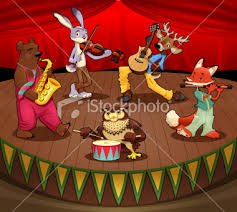
NE Ohio is also not a region of ticket-buying risk takers; in fact my colleague Terry Stewart, recently-retired CEO of the Rock & Roll Hall of Fame, has recently raised serious red flags about the decline in the number of ticket buyers – period – in the Cleveland community, at least when compared to other nearby cities. So when it comes to artists we book for the festival there has to be at least some measure of artist recognition in our market to entice and grow our typical audience. That recognition has many potential faces, including some presence on local jazz radio; recognizable professional artist affiliations (particularly in the case of former sidemen/women stepping out in band leadership roles); some measure of performance track record in the region; or some other “hook” that will grab a potential ticket-buyer’s attention. Remember, this is a partnership where both artists and presenters have responsibilities to build audience.
When you couple these cautionary elements with the fact that Tri-C JazzFest is unquestionably the major annual jazz event in NE Ohio – and one with heavy-duty fundraising responsibilities and an obligation to demonstrate reasonable fiscal restraint to its producing agent (Cuyahoga Community College) – it makes you wonder what young artists who have never played the market or achieved any measure of visibility in your market are thinking about when they cold pitch booking requests out of the proverbial blue to a community’s signature annual jazz event for what would be their first exposure in that market!
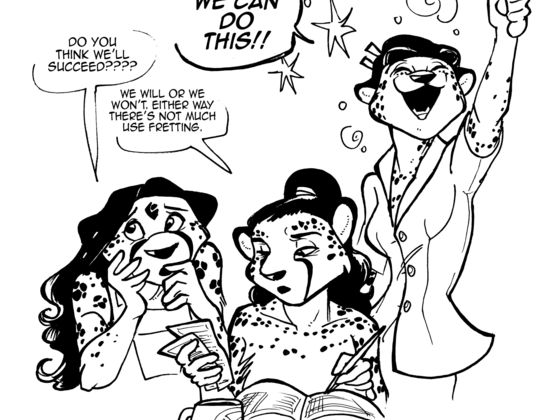
Young artists must establish at least some measure of market exposure before pitching a given market’s major annual jazz festival; that’s one of the difficult facts of this whole equation. In the case of the Northeast Ohio market I generally recommend that artists making cold pitches should strive for a Nighttown gig or some other market visibility before pitching our festival.
With that in mind here are a few recipe elements – from both the interpersonal and career development levels – which artists should consider engaging or adapting to make themselves more viable and potentially more attractive to achieve bookings in any market.
Cooking up a tastier dish of festival and gig readiness…
Very important RESEARCH
Resources: the annual JazzTimes, and DownBeat magazine international festivals guides; these guides will give you a sense of when festivals present as well as contact information; (education) the annual JazzTimes jazz education guide, DownBeat’s “Where to Study Jazz” issue; the Pollstar Talent Buyer Directory (for general concert venue information); and the universe of online resources. Those jazz education guides and issues are important because college, university and even some high school jazz studies classes and programs often represent education residency opportunities for artists which may include performances; and at least on the college/university level many of them present annual festivals. Let’s face it, jazz education is one of the healthiest sectors of the jazz community representing employment opportunities for qualified artists.
Investigate festival & presenter web sites:
Determine who, what, when, where info… but also carefully research their booking patterns (who and what type of artist they are likely to present; e.g. if you perform original music that is considered on the cutting edge, the Earshot Jazz Festival (Seattle) or Outpost Productions (Albuquerque) – both of which present jazz year-round as well as their annual festivals – will be better prospects for you than say Manchester Craftsmen’s Guild (Pittsburgh) or the Mid-Atlantic Jazz Festival (MD). As you’re researching the various festival and presenter web sites ask yourself these questions: Do they typically present lesser known or emerging artists? Do they present student ensembles? Do they have a significant jazz education component? What is the size of their venue(s) (if they’re presenting ticketed performances in venue(s) larger than 300-500 seats, they’re definitely less likely to take “risks” in their bookings.) Educate yourself thoroughly on what these festivals present, how and where they present, the number of venues they use for their festival or season (e.g. the Monterey Jazz Festival presents its performances on several stages across the Monterey County Fairgrounds; taking note of which artists are playing which of those stages will give you a better sense of where younger artists typically perform at MJF and where the more established artists perform). Bottom line you must determine if a particular festival or presenter is a good fit for what you present and where you are in your career before spinning your wheels aimlessly for gigs.
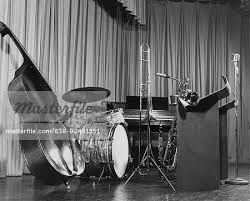
You must have a recent recording…
…to exemplify who you are and what you play; to use as a “calling card” to substantiate your artistry; to be made readily available to the presenter or festival for their serious consideration, and eventually to utilized for their local PR/Marketing efforts (NOT a demo – a commercially available recording that potential audience members can readily access).
A viable web presence that contains press kit elements; a clear and concise bio; YouTube clips or a url to direct presenter prospects to some recent performance footage; color photos (quality images – not necessarily of the sweaty guys/girls on the bandstand variety or your favorite smartphone shot of you backstage schmoozing with Herbie Hancock or having a blast with friends – but images that translate well in hard copy print and online reproduction. And make sure your web site photos are easily harvested for quick online usages. Always include easily accessible contact information on your site; and believe me, experience shows that including that direct contact information – even if it is for someone who represents you – is much preferable to those fill-in the blanks contact forms, which are overly formal and off-putting to the user, who might be interested in exposing personal contact information. I recently went to the web site of a prominent artist’s manager, dutifully filled out their contact request form… and now one month later have still yet to hear from that manager – whose artist has likely lost that opportunity as a result of his/her manager’s neglect of his own web site! Many of us prefer direct communication information and would rather not go through some process to communicate directly; better still, a url link that will take the user directly to email mode. Are you a secret artist? If not, be up front and forthcoming with your contact information and links for further information.
Tailor your communication skills…
Communicate with festivals and presenters (and not in an impersonal email blast you threw up against the wall to see what sticks) in a polite, inquiring, collegial manner; don’t be overly aggressive and self-absorbed, walk that fine line; persevere in the process: keep prospects abreast of your activities without being pushy and annoying; be in touch persistently, respectfully and collegially. Remember to treat your bookings search as a joint venture with the presenter in more respects than just showing up and playing the gig. In my work as a presenter I’ve established communication relationships with artists that may take a couple of seasons before we’re able to realize an actual booking. But I will always favor persistent, collegial, cordial, professional communications… from artists with real talent. Be pleasant and persistent, but NOT insecure and pushy. I recall being approached once at a conference by an artist who had sent me their music. They asked if I’d received it; when I confirmed that I had received their music, I got distracted momentarily and turned my head only to spot that same artist out of the corner of my eye mouthing the words “…then why haven’t you responded…” Needless to say, that was a definite red flag of insecurity and I’ve neither written about nor presented that artist since. Take the position in your mind that your music is so compelling that sooner or later this person is going to present you. Be confident and savvy in your communications; make sure the prospective presenter keeps abreast of your gigs and career developments, make sure presenter/prospects are up-to-date on your recordings and activities. If you get a gig in the same region as some of your gig prospects, or at one of the major festivals this prospect might attend, send them a friendly invite to come check you out (“hey, we’re going to be playing the XYZ Festival, if you’re coming we’d love to see you or, we’ll put your name on the guest list…”) Make it your point to meet & greet, but not in a pushy or overly-aggressive way – there’s a fine line you need to walk. Through the years it has often been an artist’s music AND personality that compelled me to find a way to present them.
Remember, due to fundraising and marketing considerations festivals draw up their annual artistic blueprint for the following year often before the current year festival even takes place. Whatever the case they do so well in advance – most at least nine months prior. So don’t expect to contact a festival 90-120 days out and get a booking – at least not unless they have some unforeseen cancellation. By that point most festivals have already announced their season.
Once you’ve got the gig… Stagecraft…
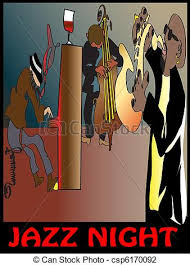
This is an area I examine very critically when checking out performances; and like many who present, even when we’re out experiencing performances purely for pleasure we’re always scouting. Your stagecraft is an important, often overlooked element in your overall presentation. Try to never let ’em see you struggling; be mindful of your onstage body language and what that might convey. Play as if you mean it, with passion, regardless of audience size. Dress and onstage demeanor are of great importance (neatness, body language, etc.). I recall back in the Young Lions days in the late 80s and 90s when folks took note of the Marsalis Brothers and their contemporaries penchant for suits and ties onstage. And I remember Wynton’s response was that the way they dressed was intended to convey the fact that they came to play, that they were serious about their craft and wanted to convey that seriousness to their audiences. There were those who scoffed at that notion, and many who still don’t get it; but as a presenter and a frequent audience member, it certainly made perfect sense to me! Look at old photos of the greats of this music… Ever see anyone in jeans, work boots and t-shirts? Why strive to reach the skills of the masters and not take into account how they conducted themselves on the bandstand; appearance was and still is of paramount importance. And you certainly don’t have to wear a suit to be fashionable or clean!
Introduce yourselves and your music from the stage, and do so with good humor. TALK TO YOUR AUDIENCE; it will do your performance a world of good and immeasurably assist you in making that connection of your playing and your music to your audience. Far too many jazz artists feel their audience is only due some good music, but it has been well-documented that audiences like to feel that connection to the musicians and the music they’re presenting through verbal communication; and don’t be inhibited in allowing your good humor to come through in your audience repartee. You don’t have to be some great comic MC, like Cannonball Adderley for one classic example, but you’d be surprised at how many points you score with your audiences by communicating with them during your set.
Jazz band stagecraft plays a significant role in audience acceptance and ultimately in audience development. Be mindful of your stagecraft… And show up to the gig looking like you came to take care of serious business, not like you’re about to go skateboarding or out in the backyard to rake some leaves.
TO BE CONTINUED…

One Response to Musicians’ opportunity recipe